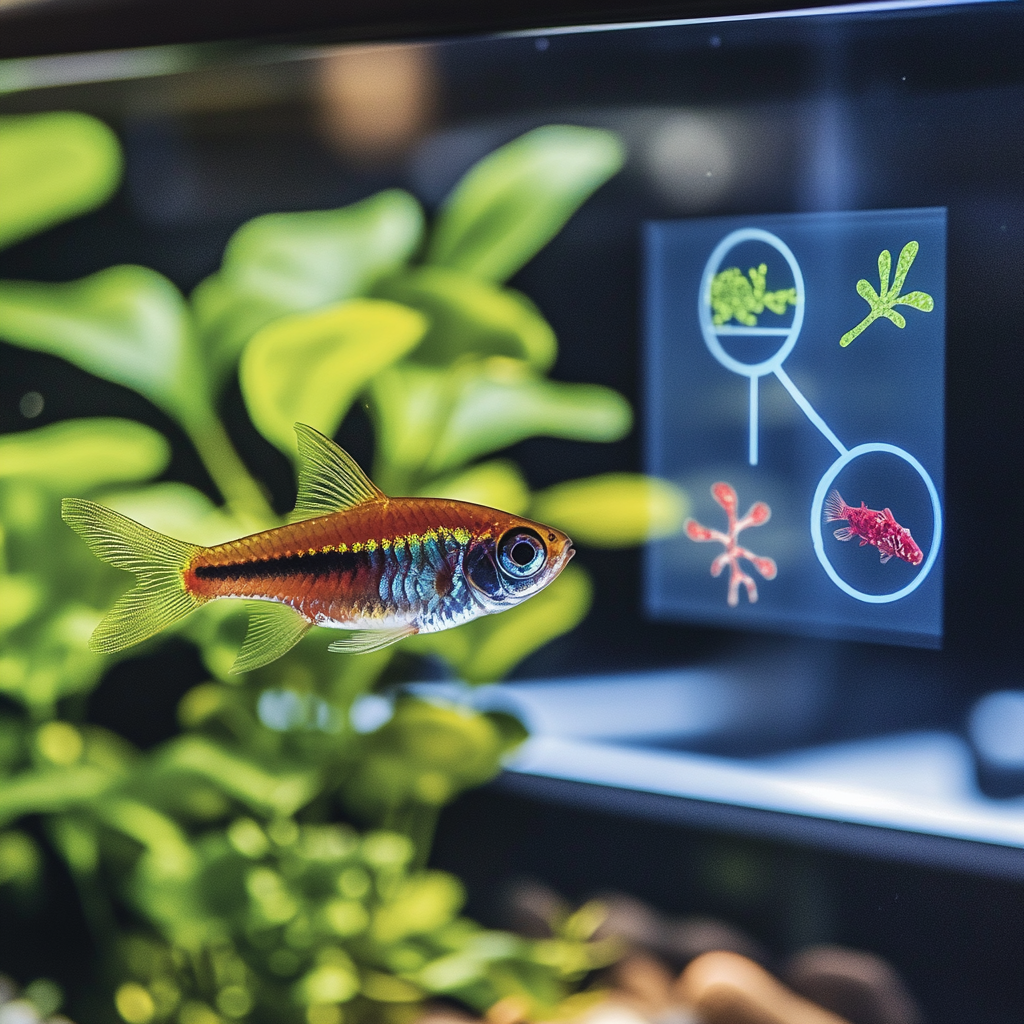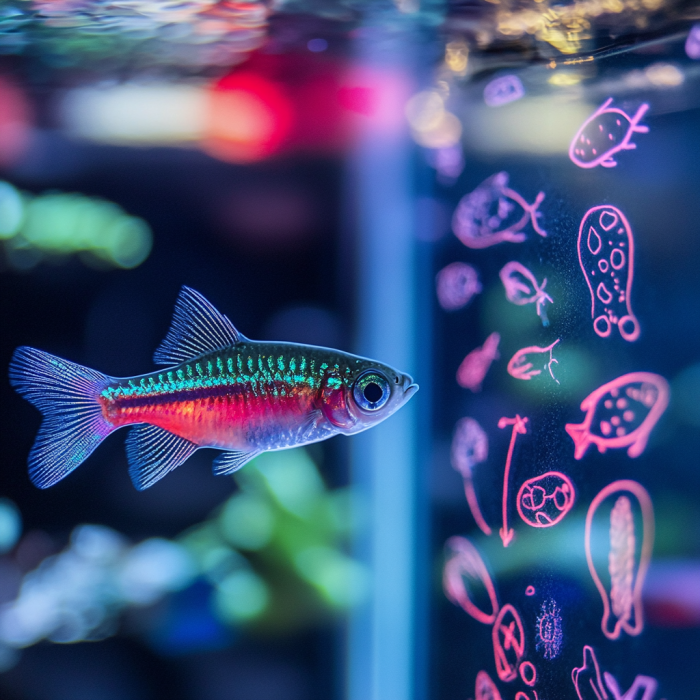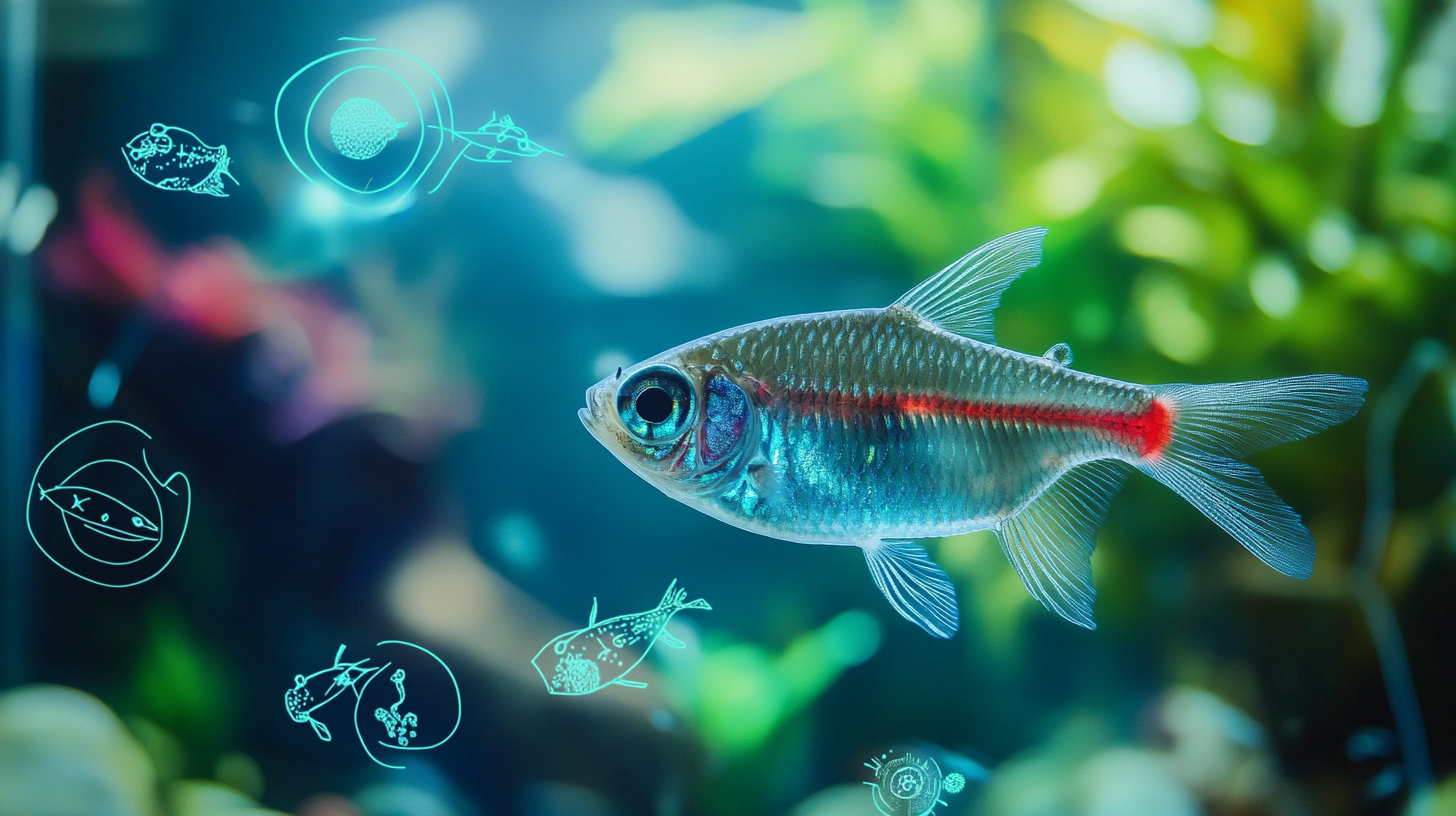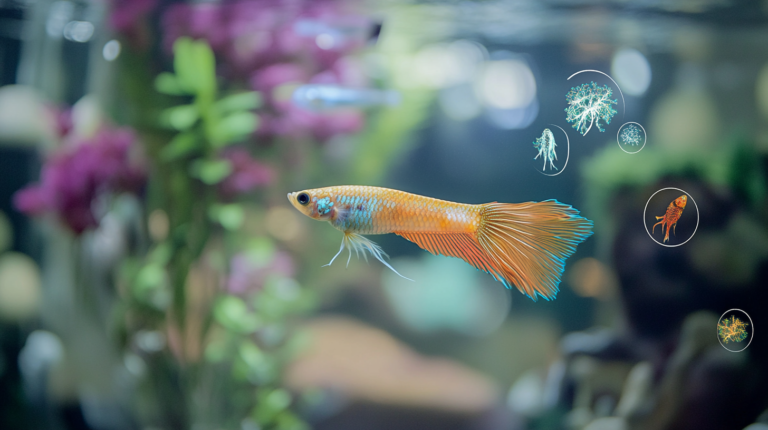Discover the 7 primary causes of bacterial infections in fish and learn proven strategies to keep your aquarium healthy. Expert tips for prevention and treatment.
Table of Contents
Maintaining a healthy aquarium environment is crucial for the wellbeing of your aquatic pets. Among the many health concerns that can affect fish, bacterial infections are perhaps the most common and potentially devastating. These microscopic threats can quickly spread throughout your tank, turning a thriving underwater ecosystem into a dangerous environment for your finned friends. Understanding the causes of bacterial infections in fish is the first step toward preventing outbreaks and ensuring your aquarium remains a safe haven for its inhabitants.
In this comprehensive guide, we’ll explore the seven primary causes of bacterial infections in fish, identify common symptoms, and provide detailed prevention and treatment strategies. Whether you’re a seasoned aquarist or new to the hobby, this information will help you maintain optimal water conditions and respond quickly if problems arise.


Understanding Bacterial Infections in Fish
Before diving into the specific causes, it’s important to understand what bacterial infections actually are and how they affect fish.
What Are Bacterial Infections?
Bacterial infections in fish occur when harmful bacteria colonize and multiply within or on a fish’s body. Unlike beneficial bacteria that help maintain water quality, pathogenic bacteria can cause disease and, if left untreated, lead to death.
Fish naturally coexist with many bacteria in their environment. Under normal circumstances, a fish’s immune system can keep these potential pathogens in check. However, when stress factors weaken a fish’s immune response or when environmental conditions favor bacterial growth, infections can take hold.
Common Types of Bacterial Infections in Fish
Several bacterial pathogens commonly affect aquarium fish:
- Aeromonas – Causes ulcers, fin rot, and hemorrhagic septicemia
- Pseudomonas – Often responsible for fin rot and ulcer disease
- Flavobacterium – Known to cause columnaris disease (cotton mouth disease)
- Mycobacterium – Causes fish tuberculosis
- Vibrio – Often affects marine fish, causing deep ulcers and internal infections
According to recent aquarium industry data, bacterial infections account for approximately 60% of disease-related fish deaths in home aquariums, making them the most significant health threat to captive fish.
The 7 Primary Causes of Bacterial Infections in Fish
1. Poor Water Quality
Poor water quality is the leading cause of bacterial infections in fish, responsible for an estimated 70% of initial disease outbreaks in home aquariums.
How Water Quality Affects Bacterial Growth
Aquarium water contains nutrients, organic matter, and microorganisms. When water quality deteriorates, conditions often favor the proliferation of harmful bacteria while simultaneously stressing fish, making them more susceptible to infection.
Key water parameters that influence bacterial growth include:
- Ammonia and Nitrite Levels: These toxic compounds are produced by fish waste and decaying organic matter. Even low levels (above 0.25 ppm for ammonia and 0.5 ppm for nitrite) can damage fish gills and skin, creating entry points for bacteria.
- Nitrate Concentration: While less toxic than ammonia or nitrite, high nitrate levels (above 40 ppm) create chronic stress that weakens fish immune systems.
- pH Instability: Sudden changes in pH can stress fish and create favorable conditions for certain bacteria. Most freshwater aquariums should maintain a stable pH between 6.5 and 8.0, depending on the species kept.
- Dissolved Oxygen Levels: Low oxygen levels force fish to breathe more rapidly, stressing their respiratory systems and making them vulnerable to bacterial infections.
Prevention Strategies
- Test water parameters weekly using reliable test kits
- Perform regular water changes (25-30% every 1-2 weeks)
- Install appropriate filtration for your tank size
- Don’t overstock your aquarium (follow the guideline of 1 inch of fish per gallon for small fish)
- Establish a nitrogen cycle before adding fish to a new tank
2. Overcrowding
Maintaining appropriate stocking levels is critical for fish health. Overcrowding creates multiple problems that can lead to bacterial infections.
How Overcrowding Contributes to Bacterial Infections
- Increased Waste Production: More fish produce more waste, quickly degrading water quality
- Elevated Stress Levels: Crowded conditions create social stress through increased competition for food and territory
- Faster Disease Transmission: In overcrowded tanks, pathogens spread more quickly between fish
- Reduced Immune Function: The chronic stress of overcrowding suppresses fish immune systems
A 2023 study published in the Journal of Aquatic Animal Health found that fish kept in tanks with 50% higher than recommended stocking densities showed a 78% increase in bacterial infection rates compared to appropriately stocked tanks.
Prevention Strategies
- Research the space requirements for your specific fish species
- Follow the general guideline of 1 inch of fish per gallon for small fish (but adjust based on species needs)
- Consider the adult size of fish when stocking, not their size at purchase
- Account for territorial behavior when selecting community tank inhabitants
- Provide adequate hiding places and visual barriers for territorial species
3. Physical Injury
Physical injuries create entry points for bacteria to invade fish tissue, leading to localized or systemic infections.
Common Causes of Fish Injury
- Aggressive Tank Mates: Fin nipping and fighting can damage protective scales and fins
- Sharp Decorations: Rough edges on rocks, driftwood, or artificial decorations
- Improper Handling: Rough netting or handling during tank maintenance
- Transport Stress: Bags shifting during transport from store to home
- Inappropriate Substrate: Sharp gravel can damage bottom-dwelling species
Fish with injuries show a significantly higher rate of bacterial infection. Data from veterinary aquatic medicine practices indicate that approximately 65% of fish with visible injuries develop secondary bacterial infections if the wounds aren’t properly treated.
Prevention Strategies
- Research compatibility before combining fish species
- Inspect all decorations for sharp edges before adding to tanks
- Use soft nets and gentle handling techniques when moving fish
- Choose appropriate substrate for bottom-dwelling species
- Quarantine and treat injured fish promptly
4. Inadequate Diet and Nutrition
Proper nutrition is essential for maintaining a strong immune system in fish. Nutritional deficiencies can lead to increased susceptibility to bacterial infections.
How Diet Affects Fish Immunity
Fish require a balanced diet containing proteins, fats, carbohydrates, vitamins, and minerals. Different species have varying nutritional needs based on their natural diets. When these needs aren’t met, several problems can occur:
- Weakened Immune Response: Vitamin C and vitamin E deficiencies particularly impact immune function
- Compromised Mucus Layer: Poor nutrition can reduce the protective mucus coating that acts as a physical barrier against bacteria
- Digestive System Issues: Improper diet can damage the intestinal lining, potentially allowing bacteria to enter the bloodstream
A comprehensive study by the University of Florida’s Tropical Aquaculture Laboratory found that fish fed a varied, species-appropriate diet had 40% fewer bacterial infections than those fed a single type of commercial food.
Prevention Strategies
- Research the specific nutritional requirements of your fish species
- Provide variety in fish diets (flakes, pellets, frozen foods, live foods)
- Use high-quality commercial foods with ingredient lists showing real protein sources
- Supplement with vitamins when appropriate
- Feed appropriate amounts (overfeeding contributes to water quality issues)
- Store fish food properly to prevent nutrient degradation
5. Temperature Fluctuations
Maintaining stable water temperature is crucial for fish health. Sudden or frequent temperature changes stress fish and can create conditions favorable for bacterial growth.
How Temperature Affects Bacterial Infections
Fish are ectothermic (cold-blooded), meaning their body temperature and metabolic rate are determined by their environment. Temperature changes affect them in several ways:
- Stress Response: Rapid temperature changes trigger stress hormones that suppress immune function
- Altered Bacterial Activity: Different bacteria thrive at different temperatures; changes can favor pathogenic species
- Metabolic Disruption: Temperature fluctuations force fish to constantly adapt their metabolism, depleting energy reserves
Research from the Journal of Fish Diseases demonstrates that tropical fish experiencing daily temperature fluctuations of more than 4°F (2°C) show a 35% higher incidence of bacterial infections compared to fish kept in stable temperatures.
Temperature Ranges for Common Aquarium Fish
| Fish Type | Ideal Temperature Range | Maximum Safe Fluctuation |
| Tropical Freshwater | 75-80°F (24-27°C) | ±2°F (1°C) per day |
| Coldwater (Goldfish) | 65-72°F (18-22°C) | ±3°F (1.5°C) per day |
| Marine/Reef | 76-82°F (24-28°C) | ±2°F (1°C) per day |
| Discus (Specialized) | 82-86°F (28-30°C) | ±1°F (0.5°C) per day |
Prevention Strategies
- Install a reliable aquarium heater with thermostat
- Use a heater rated for your tank volume
- Add a backup heater for larger tanks
- Place thermometers at opposite ends of the tank to monitor temperature gradients
- Shield tanks from drafts, direct sunlight, and HVAC vents
- Consider a temperature controller for valuable livestock
6. Introduction of Infected Fish
Adding new fish without proper quarantine is one of the most common ways bacterial infections enter established aquariums.
The Risks of Skipping Quarantine
Pet store and wholesale aquarium facilities often house hundreds of fish in connected systems. While reputable stores maintain good conditions, the stress of capture, transport, and new environments weakens fish immune systems. Consider these statistics:
- Studies indicate that approximately 5-10% of commercially available aquarium fish carry potentially harmful bacteria even when appearing healthy
- A survey of home aquarists found that tanks where new fish were added without quarantine were 3.7 times more likely to experience disease outbreaks
- The cost of treating a full tank for bacterial infection is typically 5-8 times higher than setting up a quarantine system
Proper Quarantine Procedures
- Set up a separate tank with simple decoration (easy to disinfect)
- Maintain excellent water quality in the quarantine tank
- Keep new arrivals isolated for 2-4 weeks
- Observe for signs of illness
- Treat preventatively if appropriate for high-risk species
- Use separate equipment for quarantine tanks
- Add beneficial bacteria supplements during quarantine
7. Improper Medication Use
While medications can treat bacterial infections, improper use can actually increase the risk of disease outbreaks.
How Medication Misuse Leads to Bacterial Problems
- Disruption of Beneficial Bacteria: Many antibiotics and treatments kill beneficial nitrifying bacteria that maintain water quality
- Creation of Resistant Strains: Improper dosing or premature discontinuation of treatments can lead to antibiotic-resistant bacteria
- Weakened Fish: Some medications stress fish, potentially making them more susceptible to secondary infections
- Altered Microbiome: Fish, like all animals, have beneficial bacteria on their skin and in their digestive systems that help prevent pathogenic bacteria from establishing
Recent research in aquatic veterinary medicine suggests that up to 35% of bacterial outbreaks in home aquariums occur shortly after medication use, often due to disruption of the biological filtration system.
Prevention Strategies
- Only medicate when necessary and with a specific diagnosis
- Research medications before use to understand their mechanism and potential side effects
- Follow dosage instructions precisely
- Complete the full course of treatment
- Monitor water parameters closely during and after medication
- Use hospital tanks for treatment when possible
- Consider using bacterial supplements after treatment
Common Signs of Bacterial Infections in Fish
Early detection of bacterial infections gives your fish the best chance of recovery. Watch for these common symptoms:
Physical Signs
- Fin Rot: Frayed, discolored, or receding fins
- Skin Lesions: Red spots, ulcers, or open sores on the body
- Cloudy Eyes: Opacity in one or both eyes
- Raised Scales: Pine-cone appearance (dropsy) indicating internal infection
- Color Changes: Unusual darkening or lightening of normal coloration
- Excess Mucus: Visible slime coat thickening
- Gill Damage: Red, swollen, or frayed gills; rapid gill movement
Behavioral Signs
- Lethargy: Reduced activity or hanging at the water surface
- Loss of Appetite: Refusal to eat or reduced feeding
- Abnormal Swimming: Erratic movements, swimming sideways, or floating
- Rubbing/Flashing: Fish scraping against objects in the tank
- Isolation: Separating from schooling companions
- Gasping: Visible difficulty breathing even in well-oxygenated water
- Bottom Sitting: Resting on the substrate when not typical for the species
Treatment Options for Bacterial Infections
If you suspect your fish has a bacterial infection, prompt and appropriate treatment is essential.
When to Treat
- Isolate affected fish at the first sign of infection
- Take clear photos to document the condition
- Research symptoms to narrow down possible causes
- Consider consulting a veterinarian specializing in aquatic animals for severe cases
Common Treatments
Several antibacterial medications are available for aquarium use:
- Erythromycin: Effective against gram-positive bacteria
- Kanamycin: Broad-spectrum antibiotic
- Nitrofurazone: Treats external bacterial infections
- Oxytetracycline: Broad-spectrum, effective for many common infections
- Metronidazole: Useful for anaerobic bacterial infections
- Salt Baths: For mild external infections (freshwater fish only)
Treatment Protocol
- Set up a hospital tank with established filtration
- Maintain excellent water quality throughout treatment
- Remove chemical filtration (activated carbon) during medication
- Dose according to manufacturer instructions
- Complete the full course of treatment
- Monitor water parameters daily
- Perform water changes as recommended with the specific medication
- Observe for improvement or deterioration
Preventative Maintenance: The Key to Healthy Fish
Prevention is always preferable to treatment. A proactive maintenance routine dramatically reduces the risk of bacterial infections in your aquarium.
Weekly Maintenance Tasks
- Test water parameters (ammonia, nitrite, nitrate, pH)
- Perform water changes of 10-25% depending on bioload
- Clean filter media in tank water (never tap water)
- Remove visible debris and uneaten food
- Inspect fish for any signs of health issues
Monthly Maintenance Tasks
- Deep-clean substrate with a gravel vacuum
- Trim and remove dead plant matter
- Clean algae from glass and decorations
- Check equipment functionality (heaters, filters, etc.)
- Evaluate stocking levels and fish compatibility
Bi-Annual Maintenance Tasks
- Replace filter media (staggered to preserve beneficial bacteria)
- Clean filter housing and impellers
- Test water hardness and adjust if necessary
- Evaluate overall aquascape and make improvements
- Consider preventative treatments for high-risk systems
Recommended Pet Products on Amazon
Aquarium Water Care Products
- API FRESHWATER MASTER TEST KIT – Complete testing kit for monitoring essential water parameters
- Seachem Prime Water Conditioner – Detoxifies ammonia and removes chlorine/chloramine
- API E.M. ERYTHROMYCIN – Antibacterial medication for gram-positive bacterial infections
- Aqueon QuietFlow LED PRO Aquarium Power Filter – Reliable filtration with biological media
Frequently Asked Questions
How quickly can bacterial infections spread in an aquarium?
Bacterial infections can spread rapidly in an aquarium, especially in systems with high fish density or poor water quality. In severe cases, an entire tank can be affected within 48-72 hours. The transmission rate depends on the specific bacteria involved, water parameters, fish stocking density, and the immune status of the fish. This is why early detection and isolation of sick fish is crucial for preventing tank-wide outbreaks.
Can bacterial infections in fish affect humans?
Yes, some fish bacterial pathogens can cause infections in humans, though this is relatively rare. Bacteria like Mycobacterium marinum, Aeromonas, and Vibrio can potentially infect humans through open wounds or cuts while handling infected fish or aquarium water. Always wear gloves when handling sick fish or working in tanks with known infections, especially if you have any cuts or abrasions on your hands. Wash and disinfect your hands thoroughly after any aquarium maintenance.
Is it necessary to treat the entire tank if only one fish shows signs of infection?
In most cases, it’s best to remove and isolate infected fish for treatment rather than medicating the entire display tank. This approach has several advantages:
- Prevents disruption of beneficial bacteria in the main tank’s filtration system
- Allows for more aggressive treatment of the affected fish
- Reduces medication costs and environmental impact
- Protects sensitive species that might react poorly to medications
However, if multiple fish show symptoms or if the infection appears highly contagious, treating the entire system might be necessary. Consult with an aquatic veterinarian if you’re uncertain about the best approach.
How can I tell the difference between bacterial and fungal infections?
Distinguishing between bacterial and fungal infections can be challenging, but there are some general characteristics that may help:
Bacterial Infections:
- Often appear as red, inflamed areas on skin or fins
- May cause ulcers, holes, or eroded areas
- Can cause fin rot with a jagged appearance
- Often affect internal organs (showing as swelling or protruding scales)
- May cause color changes, particularly darkening
Fungal Infections:
- Typically appear as white or gray cotton-like growths
- Usually develop on areas of previous injury
- Often start small and grow outward over days
- Tend to be more raised and distinct than bacterial infections
- Generally don’t cause the same level of redness or inflammation
When in doubt, some medications treat both bacterial and fungal infections simultaneously.
Do I need to disinfect my tank after a bacterial outbreak?
If you’ve experienced a severe bacterial outbreak that resulted in multiple fish deaths, a complete tank disinfection might be warranted. However, this is a last resort as it will destroy the beneficial bacterial colony in your filtration system. For most cases, these steps are sufficient:
- Remove and quarantine any remaining fish
- Perform large water changes (50-70%)
- Clean substrate thoroughly
- Rinse filter media in dechlorinated water
- Allow the tank to run empty for 1-2 weeks
- Test water parameters before reintroducing fish
For complete disinfection (only in extreme cases), a 1:9 bleach solution can be used on non-porous equipment, followed by thorough rinsing and dechlorination.
Can natural remedies effectively treat bacterial infections in fish?
Some natural remedies may help with minor bacterial issues or as preventative measures, but they generally aren’t as effective as commercial medications for treating established infections. Natural approaches that show some efficacy include:
- Aquarium salt (for freshwater fish): Can help with osmoregulation and may inhibit some bacteria
- Indian almond leaves: Release tannins that have mild antibacterial properties
- Garlic-infused food: May boost fish immune systems
- Increased temperature: Can speed up fish metabolism and immune response (within species-appropriate ranges)
These should be considered supplementary to proper treatment for serious infections rather than replacements.
Keep Your Aquarium Thriving
Maintaining a healthy aquarium environment requires diligence, knowledge, and preventative care. By understanding the causes of bacterial infections in fish and implementing the strategies outlined in this guide, you can significantly reduce the risk of disease outbreaks in your aquatic system.
For more comprehensive guides on all aspects of pet care, including detailed articles on specific fish diseases, water chemistry management, and compatible species selection, visit Blithepet. Our expert team provides up-to-date resources and personalized recommendations to help ensure your pets thrive.
Conclusion
Bacterial infections in fish are a common challenge for aquarists of all experience levels, but they don’t have to be inevitable. By maintaining excellent water quality, avoiding overcrowding, providing proper nutrition, stabilizing temperature, quarantining new additions, preventing physical injury, and using medications appropriately, you can create an environment where fish thrive and bacterial pathogens struggle to gain a foothold.
Remember that healthy fish with strong immune systems are your best defense against disease. Focus on creating optimal living conditions for your aquatic pets, and you’ll be rewarded with vibrant, active fish and a beautiful underwater ecosystem.
Have you faced bacterial infections in your aquarium? Share your experience and what worked for you in the comments below! Your insights could help fellow fish keepers overcome similar challenges.





